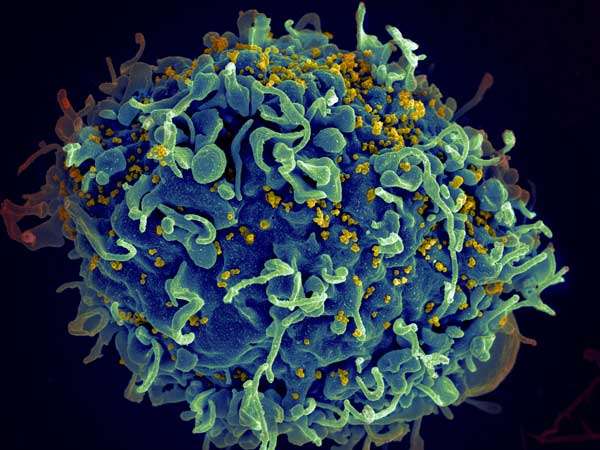Prevention of HIV increasing, but no one should be left behind

Gay and bisexual men are getting tested and using medications to prevent HIV transmission more than ever, with UNSW researchers recording an encouraging major shift towards new forms of prevention thanks to government-funded access programs.
Researchers at UNSW's Centre for Social Research in Health (CSRH) say 92 percent of HIV-positive gay and bisexual men are taking antiretroviral treatment (ART) and achieving an undetectable viral load. The result is more than 90 percent of these men can no longer transmit HIV. This is a record high for the third year running.
The Annual Report of Trends in Behaviour 2018 will be released today by the CSRH at UNSW Sydney, alongside The Kirby Institute's Annual Surveillance Report in HIV, viral hepatitis and sexually transmissible infections in Australia at the Australasian HIV/AIDS Conference in Sydney.
The report finds the proportion of gay men with casual partners who reported using the HIV prevention tool pre-exposure prophylaxis (PrEP) before sex increased from 1 percent in 2013 to 5 percent in 2016 and then to 16 percent in 2017.
Project leader of the Gay Community Periodic Surveys at CSRH, Professor Martin Holt, said this increase was mostly seen during 2016-2017, suggesting PrEP uptake was boosted by access to state-funded PrEP programs in NSW, Victoria and Queensland in 2016.
"PrEP and treatment as prevention (TasP) are becoming increasingly popular HIV prevention strategies used by gay and bisexual men, particularly those well connected to the urban gay community networks," Professor Holt said.
"Now that PrEP is available through the Pharmaceutical Benefits Scheme, the challenge is to achieve greater prevention coverage of all people at risk of HIV, including those who are Medicare-ineligible, in order to achieve targets for the elimination of HIV transmission."
Key findings from the Gay Community Periodic Surveys show that gay and bisexual men are taking a number of critical steps to negotiate relationships, sex and HIV risk in a changed prevention landscape. These measures include:
Frequent HIV testing: In 2017, over 40 percent of non-HIV-positive gay men had at least three tests within the previous year (one HIV test every four months on average).
Comprehensive STI testing: In 2017, over half of gay and bisexual men reported comprehensive STI testing (a minimum of one blood sample, urine sample, throat swab and rectal swab each) in the previous year.
Regular HIV clinical monitoring: over 60 percent of HIV-positive gay men had quarterly HIV-related clinical visits in the previous year.
Increased STI diagnoses: Close to one in four HIV-negative gay men and two in five HIV-positive gay men reported an STI diagnosis in the previous 12 months.
Improved testing helps identify people with STIs who may otherwise go untested and untreated. This can lead to an increase in people who are diagnosed and treated, with the aim of achieving earlier interruption of the spread of these infections.
Lead author of the CSRH report, Associate Professor Limin Mao, says the report shows there is a continued improvement in the health of people living with HIV, which contributes significantly to eliminating HIV transmission.
"Increased reliance on effective biomedical prevention strategies by both HIV-positive and HIV-negative men have brought successes in driving HIV notifications down," she says.
"This also brings challenges to our health system to take a more holistic approach to a range of priority populations across different settings."
According to Associate Professor Christy Newman, also from CSRH, these changes provide an opportunity to expand and prioritise future efforts towards the needs of minority groups.
"Many populations have been less well engaged by existing approaches to HIV prevention, including straight-identified men who have sex with men, people from migrant or refugee backgrounds, women, and adolescents and young people," Associate Professor Newman says.
"We now have an opportunity to think more creatively about overcoming the stigma and taking alternative approaches to better serve beyond urban communities of gay and bisexual men."
The Director of CSRH, Professor Carla Treloar, says: "Our report highlights further efforts are needed to address the HIV/STI epidemic, using more people-centred systematic approaches to engage people still facing stigma and discrimination."
More information: Annual Report of Trends in Behaviour 2018. csrh.arts.unsw.edu.au/research … -trends-in-behavior/




















